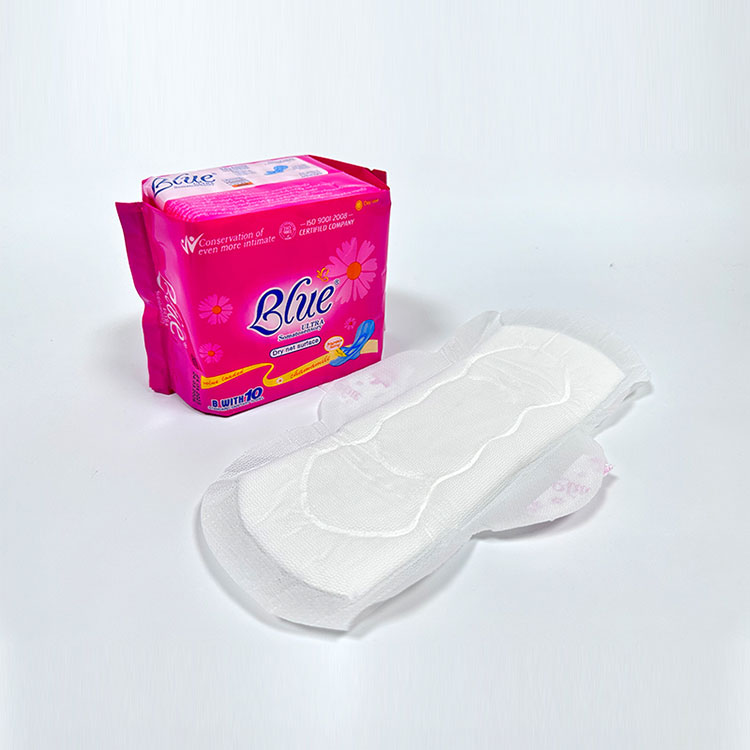The materials of sanitary napkins are mainly divided into the following five categories, corresponding to different functional layers and design requirements.

1. Surface material
Cotton surface is made of natural cotton, which is skin-friendly and not easy to cause allergies, suitable for sensitive skin .
Dry mesh surface uses polyethylene (PE) perforated film, which absorbs quickly and has a dry surface, but may cause friction to some people .
Bamboo fiber surface is made of natural bamboo fiber, has excellent breathability and contains natural antibacterial ingredients, suitable for women who pay attention to odor control .
2. Absorption layer material
Polymer absorbent resin (SAP) , the core absorption material of sanitary napkins, has strong water absorption capacity and can lock liquid, and is mostly used in high-end products .
Wood pulp/fluff pulp , traditional absorption material, low cost but limited absorption efficiency, some inferior products have safety hazards .
3. Bottom layer material
Breathable membrane can prevent leakage while maintaining air circulation and reducing stuffiness .
Waterproof film is highly leakproof but has poor breathability, and is suitable for scenarios with heavy menstrual blood volume.
4. Special functional materials
The silk surface layer is made of natural silk protein fiber, which has excellent breathability and moisture absorption, and is suitable for people with sensitive skin and sufficient budget.
Some sanitary napkins use liquid materials to enhance elasticity and absorption, but the fit may be insufficient.
5. Auxiliary materials
Release paper and food glue are used to fix and package sanitary napkins, which are environmentally friendly and safe.
In summary, the material selection of sanitary napkins needs to be combined with one's own skin quality, menstrual blood volume and usage scenarios. For example, sensitive skin can give priority to sanitary napkins with pure cotton or silk surface, and when the amount is large, it can be matched with products with polymer absorbent core + breathable membrane design.






